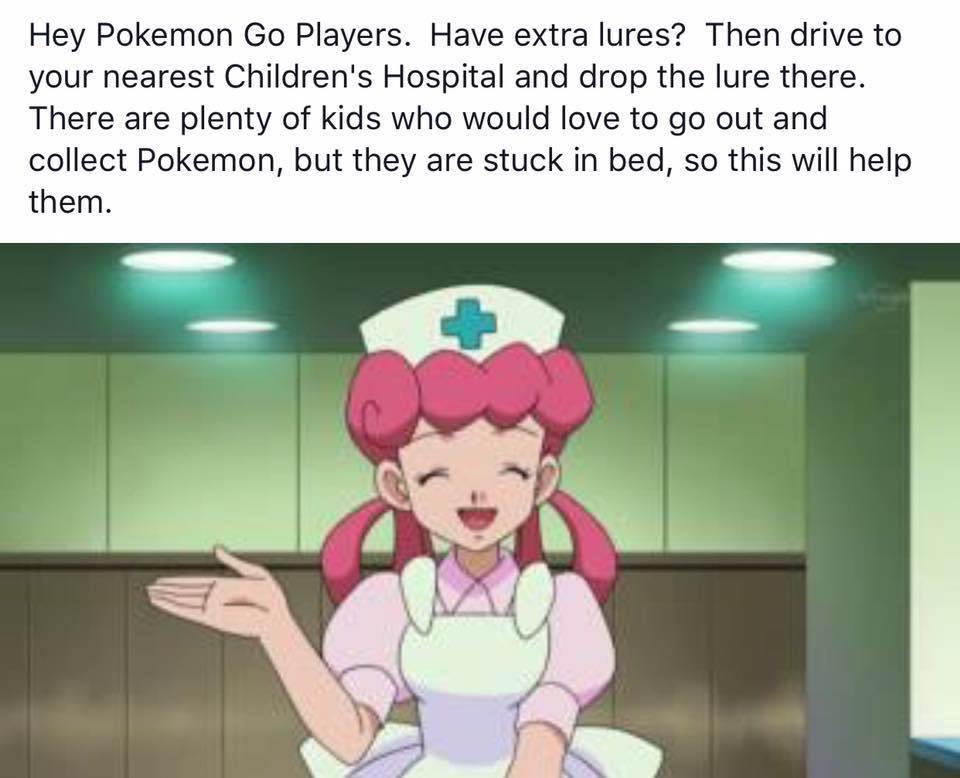Pokéstop and Think
Published 9 years, 5 months pastAs I write this, Pokémon Go is still huge. One of the latest moments was the stampede that occurred when a rare Pokémon spawned in Central Park. And one of the stories that’s fascinated me the most has been that of Boon Sheridan, who lives in a converted church that’s marked as a Gym — so now he has random people hanging around outside his home at all hours. (The Gym has since been removed by Niantic.)
There’s a lot I could say about Niantic’s apparent lack of foresight regarding how Pokémon Go play might intersect badly with the physical world and the people who inhabit it. Spawning a water Pokémon in the middle of New York City’s 9/11 Memorial, for example, comes off as a little bit…callous? Disrespectful? To say nothing of the reports of Pokémon Go play disrupting the Holocaust Museum in Washington, DC, or Auschwitz.
But that’s not what I want to ponder right now.
I’ve seen a meme circulating around Twitter and Facebook, encouraging Pokémon Go players with extra lures to drive down to the local children’s hospital, in order to draw more creatures to the sick kids, confined to their beds, who might want to play.
 And, indeed, at least one children’s hospital in Michigan is embracing Pokémon Go to get their patients up, moving around, and interacting with each other. Hospitals generally have multiple Pokéstops in them already, so luring in creatures is even easier. Why not jump in the car, as the meme suggests, and bring a few tears of joy to a bedridden child’s face?
And, indeed, at least one children’s hospital in Michigan is embracing Pokémon Go to get their patients up, moving around, and interacting with each other. Hospitals generally have multiple Pokéstops in them already, so luring in creatures is even easier. Why not jump in the car, as the meme suggests, and bring a few tears of joy to a bedridden child’s face?
Because it might have the opposite effect. Not every bed in the hospital is within range of the Pokéstops, which means that you might condemn a child unable to leave their bed to watch the creatures spawn and spawn, just beyond their ability to collect them. Their tears won’t be of joy — and their misery might be prolonged by having other patients talk excitedly about all the Pokémon they caught and levels they gained.
Beyond that, if the Pokéstops in a hospital are constantly in Lure mode, they’ll lure more than just Pokémon: members of the general public will start showing up and trying to gain access to the hospital for no other reason than to “catch ‘em all”. This can create a number of problems, from the simple disruption to people’s work to adding extra strain on the hospital’s security personnel. The surge in random visitors at all hours could force the hospital to spend money on extra security staff hours — money which is then not available for other things. Like medicine. And children in hospitals are often immune-compromised, which means all it takes is one infectious Pokémon player to cause a serious medical crisis. A whole crowd of them represents every NICU’s nightmare.
What’s the societally correct thing to do? Here’s the thing: we don’t know. We haven’t figured this out yet; in fact, we’ve barely started to think about figuring it out. When it comes to luring monsters for the benefit of sick kids, please, call the hospital first to ask if your act of generosity will be welcome. Maybe it will! Or maybe not, and for very good reasons. In the absence of better experience design on Niantic’s part, the players need to step up and think through the possible ramifications of their choices, positive and negative.
I can easily imagine some hospitals asking players to only drop Lures at certain times, such as only during daylight hours, or to spread them out so as to maintain a constant supply. They might request specific Pokéstops be enhanced, and others left alone. (Remember, Pokéstops’ locations are defined by Niantic, not the physical place that ‘hosts’ them.)
And I can just as easily imagine hospitals having absolutely no idea what to say to people who ask them what they would prefer. This is all happening at internet-game speed, and large organizations can be slow to react. So call ahead — and in the absence of a clear “yes, please, come on down!”, assume that the Lures would not be welcome.
I know this isn’t tidy. In a just world, the idea of dropping Lures for sick kids would be pure and right, with no potential downsides. But then, in a just world, there would be no need of children’s hospitals.